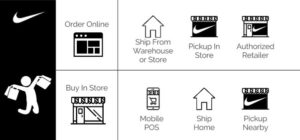Anita Lee, the US General Manager of Digital Crew, a multicultural advertising agency specializing in Chinese, English, Japanese and Hindi digital marketing services, shared her tips on E-Commerce Live-streaming for Forbes recently.
Here’s what the article says. (Please note: The article has been pasted from Forbes website.)

The unexpected Covid-19 outbreak has hit the global economy hard. In China, where the virus was first known to have surfaced, more than 460,000 businesses were closed permanently in the first quarter. With sales plunging due to stay-at-home orders, retailers that relied heavily on physical stores before the pandemic had no choice but to look for ways to reach their customers more directly and safely.
Some decided to turn to e-commerce livestreaming. Alibaba, China’s largest e-commerce platform, revealed that its livestreaming platform, Taobao Live, saw a surge of 719% in first-time merchants in February 2020.
But what exactly what is e-commerce livestreaming? Is it all hype or a business opportunity you can’t miss?
What is livestreaming?
E-commerce livestreaming resembles traditional television live broadcasts where hosts would introduce products and answer viewer questions live. Powered by the internet and mobile phones, today’s e-commerce livestreaming experience is much more interactive and seamless.
With livestreaming, hosts try on different types of products, and customers can make comments and ask questions through real-time chat windows. Customers can even ask hosts to try on items they’d like to see. Most Chinese platforms have made the e-commerce element in livestreaming extremely easy. With just a few clicks, customers can place orders without exiting the app or livestreaming session.
Why should retailers care about livestreaming?
My company specializes in Chinese digital marketing, and through this experience, I’ve seen the potential e-commerce livestreaming could hold for brands. I’ve also observed that livestreaming e-commerce in China is not new. In 2018, e-commerce livestreaming generated around $14 billion in transactions on Taobao Live, and it is expected that e-commerce transactions in livestreaming in China will more than double in 2020.
Globally, the livestreaming industry as a whole is booming amid the coronavirus, and it grew by 45% between March and April.
Keys To Successful E-Commerce Livestreaming
If you’re considering breaking into China’s e-commerce livestreaming industry, keep in mind that it is highly competitive. To thrive, you need to:
1. Familiarize yourself with the industry and the platforms’ audiences. In my experience, overall, there are three platform types:
• Those that primarily position themselves as e-commerce sites and have incorporated livestreaming elements into their platforms: Taobao Live is undoubtedly one of the biggest players in this category. JD.com and Pinduoduo, Alibaba’s major competitors, have also made plans to expand their livestreaming ecosystems.
• Those that built their businesses around sharing content and have added e-commerce livestreaming features to their platforms: Douyin and Kuaishou dominate the second type of livestreaming e-commerce platform. The two are relatively similar in size, with Douyin having over 400 million daily active users and Kuaishou over 300 million. However, I’ve found that Douyin and Kuaishou have quite different audiences and positioning for their livestreaming visions.
• Social platforms that are new to both e-commerce and livestreaming: Launched in 2013, Xiaohongshu is one of the fastest-growing social media companies in China focusing on lifestyle content sharing, with livestreams gravitating toward fashion and beauty products. There’s also Tencent’s WeChat, which is relatively new to the game. Although the company is still experimenting with this livestreaming feature, the app’s user base of over 1 billion is a big incentive for brands to stay within WeChat’s ecosystem.
2. Define and set measurable goals for your livestreaming. Based on the types of livestreaming platforms we’ve analyzed above, pick the ones that fit your goals most. To do this, make sure you’re analyzing each platform’s audience. For example, though Douyin and Kuaishou are comparable in size, what performs well on Douyin’s platform differs from Kuaishou’s. You’ll need to consider which platforms align with your brand best before choosing a partner.
3. Have Chinese-language speakers on your team, and make sure your content is appropriate for your target market. If you have your eyes on the Chinese livestreaming industry, having people on board who can speak the language and understand the culture can be extremely beneficial. Precise, localized and contextualized content will help you reach Chinese audiences, whereas speaking the language incorrectly can make you look unprofessional or even end up offending your target audience.
4. Comply with government regulations. This can include obtaining an audiovisual publication license and moderating content according to local laws and regulations. Failure to do so may lead to fines or revocation of business licenses.
5. Consider engaging key opinion leaders to present your content. Key opinion leaders (KOLs) are part of the influencer ecosystem in China, and “they are exceedingly powerful when it comes to social influence,” according to one Forbes article. Brands should do research on each KOL’s follower base, reputation and expertise and find the ones who best match their brand image or campaign message.
Final Takeaways
While livestreaming e-commerce has advantages, many brands are still skeptical of it. However, I believe it’s time to consider experimenting with different livestreaming content, KOLs and platforms to find out what suits your brand best.
Digital Crew is a multi-award winning multicultural advertising agency with offices in Sydney, Melbourne, Hong Kong, Guangzhou, Shanghai, Tokyo, New York and Mumbai. We specialize in Chinese, English, Japanese and Hindi Digital Marketing services.
We help brands target audiences in local and international markets by using bespoke multicultural marketing strategy that pushes leads, improve user engagement, raise brand visibility, increase sales, and build successful partnerships.



















